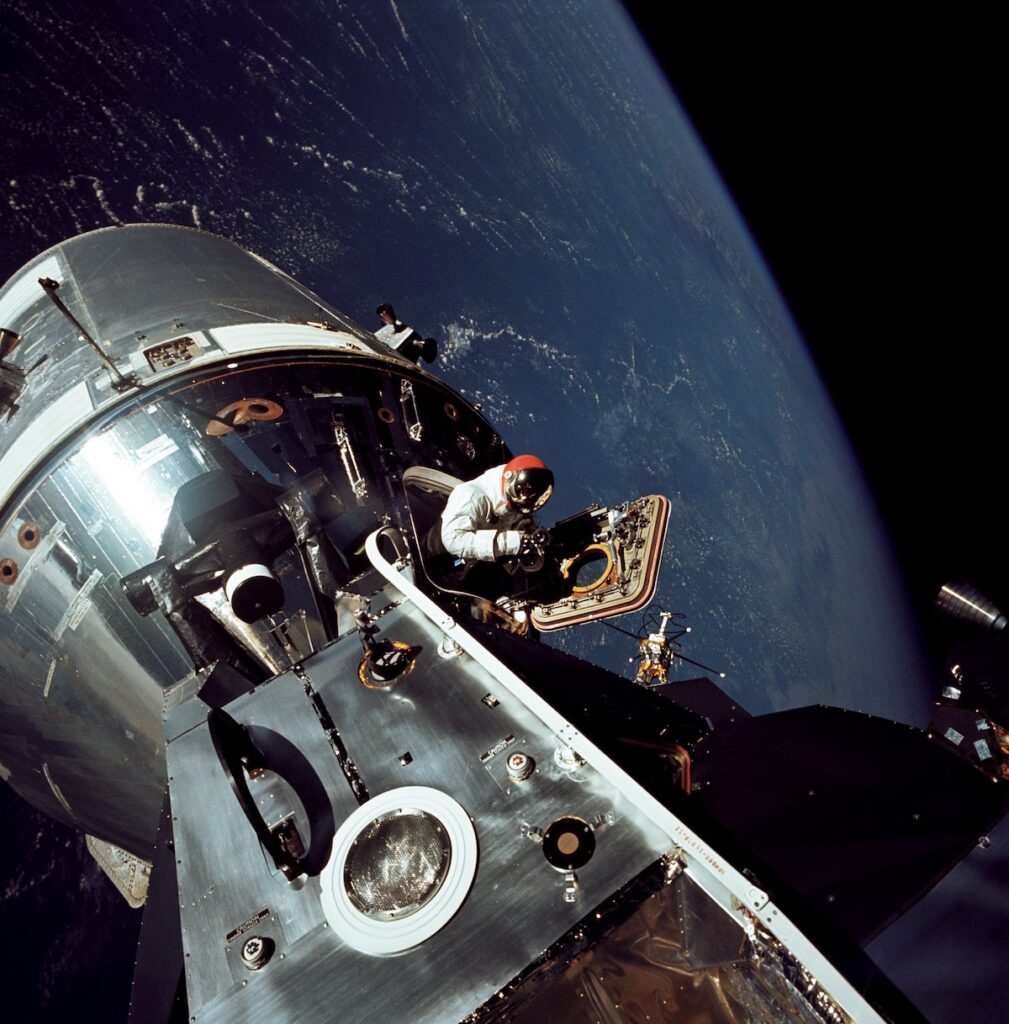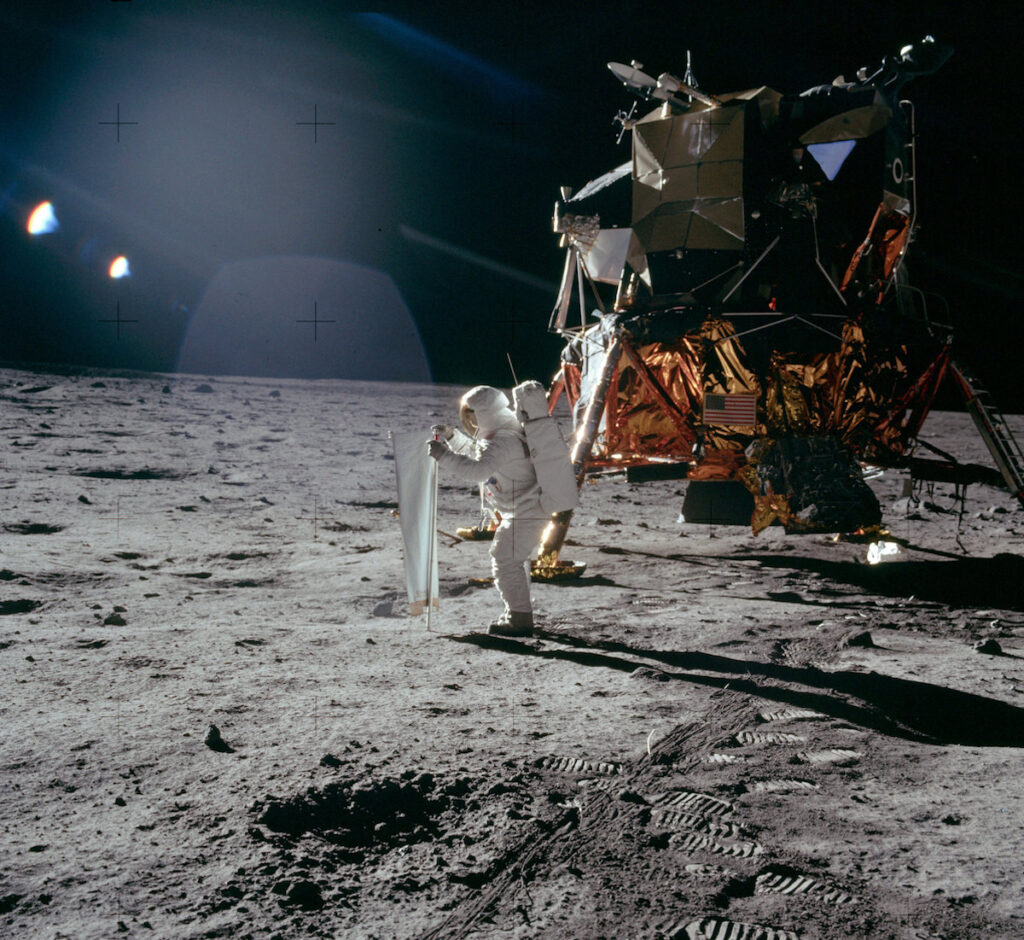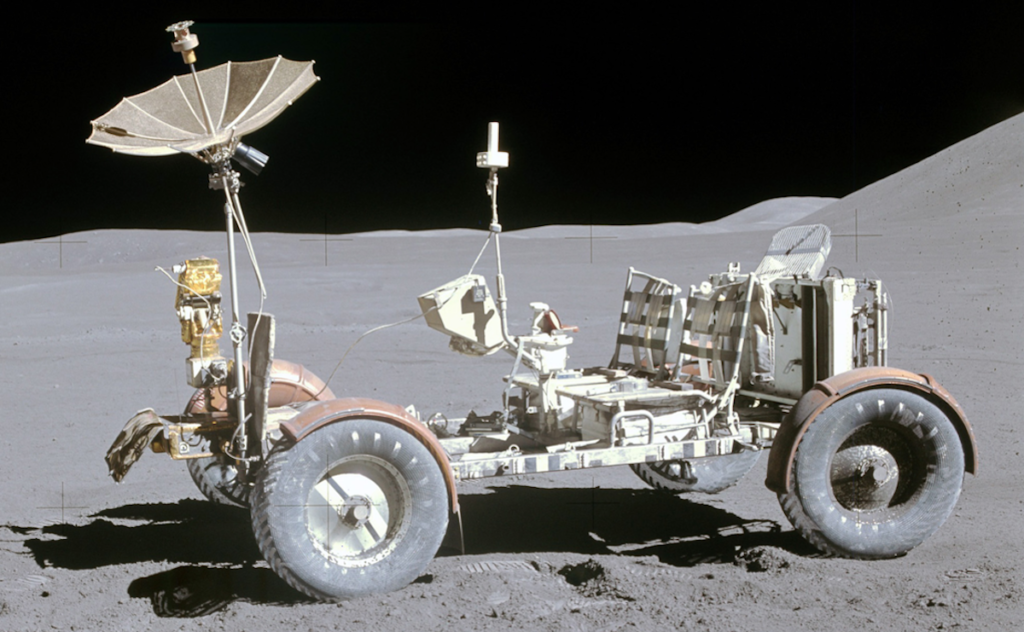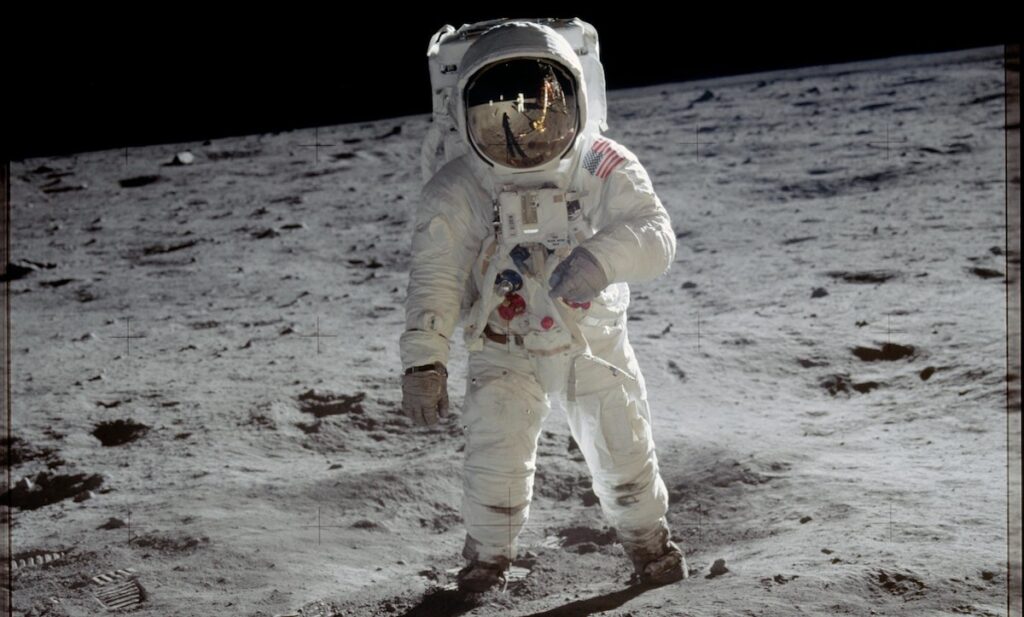I’ll just get this out of the way now: We don’t care enough about space these days (though maybe that will change with the Artemis missions). Back in the 60s and into the early 70s, spaceflight was all the rage. Of course, once we got to the Moon, people lost interest pretty quick, which is insane to consider some four decades later (even if the later missions were essentially geological hunts). But there was once a time when the entire world was captivated by the Apollo program.
Here is a look at every Apollo mission and its objectives, ranging from the ultra-exciting first manned mission to the Moon in 1968 to the third J-mission of Apollo 17, which was more or less a chance to collect a hell of a lot of moon rocks.
Apollo 1
Mission Objectives:
- Planned to be the first low Earth orbital test of the Apollo Command and Service Module (CSM) with a crew
- Test launch operations, ground tracking, and control facilities
- Measure the performance of the Apollo-Saturn launch assembly
Designed to be the first manned mission of the Apollo program, it was instead marked by tragedy, as an electrical fire in the command module during a preflight test killed all three crew members – Virgil “Gus” Grissom, Ed White, and Roger Chaffee. This mission always makes me think of the millions upon millions of things that have to go right for a mission to succeed. When you add Mars to the mix in the near-ish future, that becomes the billions upon billions of things that have to go right.
Apollo 7
Mission Objectives:
- Demonstrate CSM with crew performance
- Demonstrate mission support facilities’ performance during a crewed mission and demonstrate Apollo rendezvous capability
- Demonstrate live TV broadcasts from space
After a number of Apollo missions that were to figure out the launch and capabilities of the Saturn V rocket, Apollo 7 was the first Apollo mission to carry astronauts into space. No matter how many tests of the Saturn V rocket were performed, no one truly knew how it would perform in space. It took some brutally large testicles for the crew – Wally Schirra, Donn Eisele, and Walt Cunningham – to strap themselves in for a mission that included the objective of… making sure you could perform a live TV broadcast in space.
Apollo 8
Mission Objectives:
- Demonstrate translunar injection
- Demonstrate CSM navigation, communication and midcourse corrections all the way to the freaking Moon
- Refine systems and procedures relating to future lunar operations
If you ask me, this is the most impressive mission of them all. Sure, Apollo 11 actually landed on the Moon, but this was the very first spaceflight ever taken out of low Earth orbit. No matter how much you try to prepare for this, once you’re on your way to the Moon for the very first time, you have absolutely no idea what’s going to happen. I think the trend here is that astronauts, while total heroes, are also completely insane.
Apollo 8 circled the Moon twice, giving us possibly the most impressive photo ever taken in “Earthrise,” scoped out potential landing sites, and proved that a crew could return to Earth safely.

Apollo 9
Mission Objectives:
- Engineering test of the first crewed lunar module (LM)
- Continue to check and refine systems and procedures related to the command module, service module and their various configurations
- Test the lunar module as a self-sufficient spacecraft, and perform rendezvous and docking maneuvers
Another mission in the lead-up to actually landing on the Moon, Apollo 9 was the first mission to test the capabilities of the CSM with the lunar module. This was the first docking of two vehicles in space, as the crew proved you could undock and redock the lunar module to the CSM, pushing the Apollo program one step further to an actual Moon landing. The crew also performed Extravehicular Activity (EVA) procedures, or spacewalks, which when you see it being done during Apollo 9, it looks like David Scott just accidentally opened the wrong hatch and doesn’t know what to do next:

Apollo 10
Mission Objectives:
- Engage in all aspects of a crewed lunar landing, except the landing
- Become the first complete Apollo spacecraft to visit the Moon
- Separate the lunar module to about nine miles off the Moon’s surface before docking again with the CSM
Apollo 10 got as close as nine miles off the surface of the Moon with the lunar module, making this the biggest blue balls mission of the Apollo program.
Apollo 11
Mission Objectives:
- Landing a crew on the Moon’s surface and return to Earth, baby!
This, understandably, is the big one everyone remembers, and is likely the only Apollo mission where anyone can remember any of the crew member’s names (well, two of them – sorry, Michael Collins, that’s what happens when you have to chill in lunar orbit the whole time). This is mankind’s greatest achievement, whether you appreciate the sheer scale of what the entire Apollo program went through to this point or you simply appreciate the effectiveness of the cover-up that this landing was all filmed on a soundstage somewhere.

Apollo 12
Mission Objectives:
- Land on the Moon – again (yawn)
- Complete an extensive series of lunar exploration tasks
- Deploy the Apollo Lunar Surface Experiments Package (ALSEP), which would be left on the Moon’s surface to gather seismic, scientific and engineering data
Tough act to follow, huh? Apollo 12 was when the program started to dive more into the scientific aspects of why exactly we were going to the Moon (other than “because we can, okay?”). Apollo 12 also flew a higher inclination to the lunar equator and left the free-return trajectory after the second translunar midcourse correction, which would allow a daylight launch, conserved fuel and permitted the Goldstone, California tracking antenna to monitor the lunar module descent and landing. If that doesn’t pump you up, nothing will!
Apollo 13
Mission Objectives:
- Land in the Fra Mauro area of the Moon and perform some more science
An oxygen tank rupture turned what was a ho-hum third lunar landing into a story worthy of Tom Hanks’ talents. NASA rightfully calls this a “successful failure” considering the crew managed to return safely from the Moon despite everything that went wrong, though you have to wonder if Jim Lovell (who was on Apollo 8, which didn’t land on the lunar surface either) has developed a real vendetta against the Moon over the years.
Apollo 14
Mission Objectives:
- Explore the Fra Mauro region
- Perform geological investigations and collect surface material samples for return to Earth
- Photograph deep-space phenomena, such as zodiacal light and gegenschein (they totally saw aliens)
- Communications tests to determine reflective properties of the lunar surface
- Myriad other tests and photography of surface details from sixty nautical miles in altitude
During this mission, the astronauts collected 94 pounds of rocks and soil, which would go to 187 scientific teams in the United States, as well as 14 other countries for analysis. Weirdly enough, one of the rock samples was believed to have actually originated on Earth billions of years ago and possibly landed on the Moon from an asteroid impact. Super cool to think about! Likely not that great for the dinosaurs to experience.
Apollo 15
Mission Objectives:
- Explore the Hadley-Apennine region
- Set up and activate lunar surface scientific experiments
- Make engineering evaluations of new Apollo equipment
- Conduct lunar orbital experiments and photographic tasks
This was the first Apollo J-mission, which meant a longer stay on the Moon and, most importantly, the introduction of the lunar dune buggy (or Lunar Roving Vehicle – LRV)! I want to tell you that this thing could reach speeds of up to 90 miles per hour and when the astronauts hit a bump they floated hundreds of feet into the air in the Moon’s reduced gravity, but in reality, this thing topped out at 8 mph and the astronauts couldn’t even go that fast thanks to the uneven lunar surface.
Apollo 15 set a number of program records, which included placing the first satellite in lunar orbit and the first deep-space EVA, but the mission was marred by a HUGE controversy in which the astronauts did the unthinkable by… carrying postal covers to the Moon which would then be sold on Earth for… some money. The fallout from this, which tarnished the astronauts’ careers, fell in line with NASA’s strict stance that spaceflight remain non-commercial, which we’ll find incredibly quaint someday as we watch the Chase Bank Rocket Powered by Coca-Cola carry six reality stars to Mars, where they’ll all have to learn to survive together on the Red Planet.

Apollo 16
Mission Objectives:
- Survey materials and surface features in Descartes region
- Perform surface experiments
- Conduct in-flight experiments and photographic tasks from lunar orbit
- Evaluate performance of experiments requiring zero gravity
The second J mission of the Apollo program, astronauts John Young and Charles Duke spent a total of 71 hours on the lunar surface, while Ken Mattingly floated in lunar orbit for 126 hours. Sounds… fun, though Mattingly did get to perform an 83-minute spacewalk to retrieve film cassettes from the service module on the return trip home.
John Young, the commander of this mission, is the only person in history to have piloted and commanded four classes of spacecraft: the Gemini, Apollo command/service module, Apollo lunar module, and the space shuttle. And since they cryogenically froze him in 2018 (these are the things the media won’t tell you about), I imagine he’ll be commanding the first crewed mission to Mars as well.
Apollo 17
Mission Objectives:
- All the geological surveying and sampling of materials and surface features you can handle
- Experiment and explore the Taurus-Littrow region
- Deploy several lunar experiments, along with biomedical experiments, which included the Biostack II experiment and the BIOCORE experiment
While it was the final Apollo mission and the last time humans have stepped foot on the Moon, Apollo 17 did break a lot of records, including: the longest moon landing, longest total lunar EVAs, largest lunar sample, and longest time in lunar orbit. It was also the first night launch of U.S. human spaceflight!!!
Also, this mission has become notable recently because Daft Punk used commander Gene Cernan’s audio from the mission in the beginning of its song “Contact”:
Hey Bob I’m looking at what Jack was talking about and it’s definitely not a particle that’s nearby. It is a bright object and it’s obviously rotating because it’s flashing, it’s way out in the distance, certainly rotating in a very rhythmic fashion because the flashes come around almost on time. As we look back at the earth it’s up at about 11 o’clock, about maybe ten or twelve diame… Earth diameters. I don’t know whether that does you any good, but there’s something out there.”
While Cernan and Mission Control couldn’t come to a full agreement about what was out there, the “official” answer is that it could be the discarded upper stage of the Saturn V rocket, or lunar module panels. Yeah, right.
Due mostly to budget cuts, Apollo 18, 19 and 20 were canceled, marking the end of the most incredible and impressive era in human-space history. These days, there is still so much to get excited about in the space program, like the Mars rovers, the upcoming Artemis missions that will put us back on the Moon, or that fun couple of weeks where we all thought being in space permanently mutated Scott Kelly’s DNA. But people are hungry for exploration, and Mars is the next big kahuna on the list.
Let’s hope it’s not Elon Musk going there to just tweet terrible stolen memes or call in to the Joe Rogan Experience.
All images courtesy of NASA.
